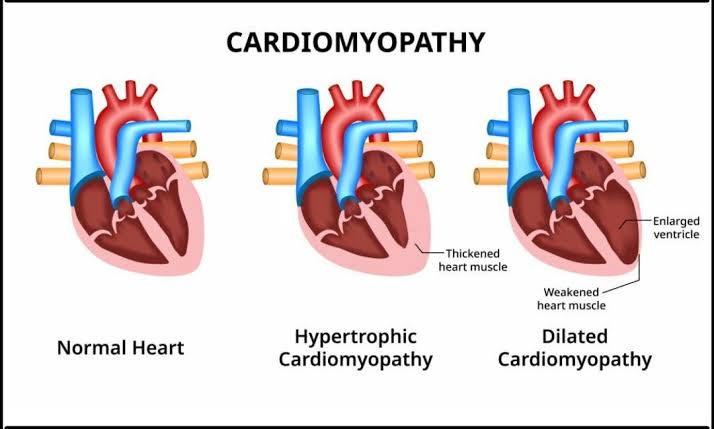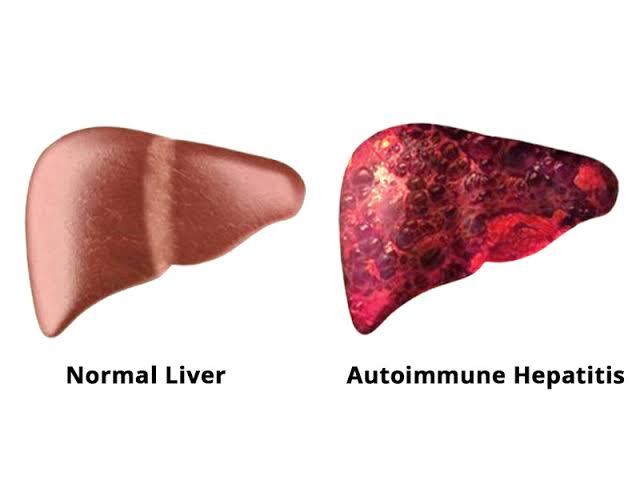
Types of Pain
a. Nociceptive Pain
Nociceptive pain is a type of pain that arises from the activation of nociceptors, which are specialized nerve cells responsible for detecting harmful stimuli that could cause tissue damage. This type of pain is typically associated with physical injury or inflammation and can be classified into two subtypes: somatic and visceral pain.
- Somatic Pain: This type originates from the skin, muscles, joints, and bones. It is often described as sharp, aching, or throbbing and is usually well-localized. Common examples include pain from cuts, fractures, or arthritis.
- Visceral Pain: This type comes from the internal organs and is often more diffuse and harder to pinpoint. It may be described as pressure, squeezing, or cramping. Conditions such as appendicitis or gallbladder disease can cause visceral pain.
Nociceptive pain can be acute (short-term) or chronic (long-lasting), depending on the underlying cause and healing process. Acute nociceptive pain typically resolves as the injury heals, while chronic nociceptive pain may persist even after the initial injury has healed.
b. Neuropathic Pain
Neuropathic pain is a distinct type of pain that occurs when there is damage to the nervous system itself. This can result from various conditions affecting the nerves, spinal cord, or brain. Unlike nociceptive pain, neuropathic pain does not arise from direct physical injury but rather from dysfunction in how the nervous system processes signals.
Common characteristics of neuropathic pain include:
- Burning Sensation: Many individuals describe their neuropathic pain as a burning feeling.
- Numbness or Tingling: Patients may experience sensations like pins and needles.
- Hypersensitivity: The affected area may become overly sensitive to touch or temperature changes.
Conditions commonly associated with neuropathic pain include diabetic peripheral neuropathy (often seen in diabetes patients), postherpetic neuralgia (following shingles), multiple sclerosis, and phantom limb syndrome (pain felt in an amputated limb).
Neuropathic pain tends to be chronic and can significantly impact quality of life due to its persistent nature and often complex treatment needs.
In summary:
- Nociceptive Pain arises from tissue damage and includes both somatic and visceral types.
- Neuropathic Pain results from nerve damage or dysfunction within the nervous system.
Pain Measuring Scales
Pain scales are essential tools used by healthcare providers to assess and communicate the intensity and nature of pain experienced by patients. There are several types of pain measuring scales, each designed for different populations and situations. Below is a detailed overview of the most commonly used pain scales:
1. Numerical Rating Scale (NRS)
The NRS is one of the most widely used pain scales, suitable for individuals aged 9 and older. Patients rate their pain on a scale from 0 to 10, where 0 indicates no pain and 10 represents the worst possible pain.
2. Visual Analog Scale (VAS)
This scale consists of a straight line, typically 10 cm long, with endpoints labeled “no pain” and “worst pain.” Patients mark a point on the line that corresponds to their level of pain, providing a visual representation of their discomfort.
3. Wong-Baker FACES Pain Scale
Designed for both adults and children over age 3, this scale uses facial expressions to represent different levels of pain. It features six faces ranging from happy (0) to crying (10), allowing patients to select the face that best matches their experience.
4. FLACC Pain Scale
The FLACC scale is observational and is primarily used for young children or individuals who cannot communicate verbally. It assesses five categories: Facial expression, Leg movement, Activity level, Crying, and Consolability, with scores ranging from 0 to 10.
5. CRIES Pain Scale
Targeted at infants up to six months old, particularly in neonatal intensive care settings, this scale evaluates Crying, Oxygenation, Vital signs, Facial expression, and Sleeplessness. Each category is scored from 0 to 2.
6. COMFORT Scale
This scale is intended for patients who cannot self-report their pain due to cognitive impairments or sedation. It evaluates nine parameters including alertness and calmness, yielding a total score between 9 and 45.
7. Adult Non-Verbal Pain Scale (NVPS)
Used primarily in non-communicative adults or those with severe cognitive impairments, this scale assesses behaviors such as facial expressions and body movements to infer levels of pain.
8. Behavioral Pain Scale (BPS)
Commonly utilized in critical care settings for patients unable to communicate verbally due to intubation or sedation; it measures facial expressions, upper limb movements, and compliance with ventilation.
9. Critical-Care Observation Tool (CPOT)
This observational tool is specifically designed for critically ill patients who cannot communicate their pain verbally; it assesses facial expressions, body movements, muscle tension, and compliance with mechanical ventilation.
10. Neonatal/Infant Pain Scale (NIPS)
This scale is used for assessing pain in neonates based on facial expressions and physiological responses like heart rate changes during painful procedures.
11. Children’s Hospital of Eastern Ontario Pain Scale (CHEOPS)
Aimed at children aged one year and older; it combines behavioral indicators such as crying and body movement with verbal reports when applicable.
These various scales provide healthcare professionals with valuable insights into patient experiences regarding pain intensity and quality across different age groups and communication abilities.
Assessing Pain in the Unconscious Patient
Introduction to Pain Assessment in Unconscious Patients
Assessing pain in unconscious patients, particularly those in critical care settings, poses significant challenges for healthcare providers. Traditional methods of pain assessment often rely on patient self-reporting, which is not possible when a patient is unable to communicate due to altered consciousness or sedation. Therefore, it is essential to utilize specific pain assessment scales designed for this population to ensure effective pain management and improve overall patient care.
Importance of Pain Assessment
Pain is often under-recognized and undertreated in critically ill patients, especially those who are unconscious. This oversight can lead to increased suffering and complications during recovery. Regular and systematic assessment of pain should be treated as a vital sign, similar to monitoring heart rate or blood pressure. The goal of assessing pain in unconscious patients is not only to alleviate discomfort but also to enhance the quality of care provided.
Commonly Used Pain Assessment Scales
According to recent literature, two primary scales have emerged as the most effective tools for assessing pain in unconscious critically ill patients: the Critical-Care Pain Observation Tool (CPOT) and the Behavioral Pain Scale (BPS).
- Critical-Care Pain Observation Tool (CPOT):
- The CPOT is specifically designed for use with non-communicative patients. It evaluates four behavioral indicators: facial expressions, body movements, muscle tension, and compliance with ventilation. Each indicator is scored from 0 to 2, allowing for a total score ranging from 0 (no pain) to 8 (severe pain). Studies have shown that using CPOT can significantly improve pain control in patients with altered consciousness.
- Behavioral Pain Scale (BPS):
- The BPS assesses three key behaviors: facial expression, upper limb movements, and compliance with mechanical ventilation. Similar to CPOT, each behavior receives a score that contributes to an overall assessment of pain severity. Research indicates that BPS scores tend to increase significantly during painful procedures compared to non-painful ones, confirming its validity as a reliable tool for measuring pain in unconscious patients.
Implementation of Scales in Clinical Practice
The integration of these scales into clinical practice requires training healthcare professionals on how to accurately observe and interpret the behaviors indicative of pain. Regular assessments using these tools should be conducted whenever there are changes in the patient’s condition or following any potentially painful interventions.
Conclusion
In conclusion, effective pain assessment in unconscious critically ill patients is crucial for ensuring humane and adequate care. The use of validated tools such as the CPOT and BPS allows healthcare providers to identify and manage pain effectively even when direct communication with the patient is not possible. By prioritizing these assessments as part of routine care protocols, healthcare teams can significantly enhance patient outcomes.
Understanding Pharmacological Treatment of Pain
Introduction to Pain Management
Pain management is a crucial aspect of healthcare, focusing on alleviating discomfort and enhancing the quality of life for individuals suffering from acute or chronic pain. The complexity of pain, which can arise from various sources such as injury, disease, inflammation, and nerve damage, necessitates a comprehensive understanding of its mechanisms and treatment options.
Mechanisms of Pain
Pain sensation involves the activation of nociceptors—specialized sensory neurons that respond to harmful stimuli. These nociceptors express specific ion channels (e.g., TRPV1 and ASICs) that are activated by noxious stimuli like heat or acid. When activated, these channels depolarize the neuron, leading to the release of excitatory neurotransmitters such as substance P and glutamate. This initiates a cascade of signals that travel through neural pathways to the spinal cord and ultimately to higher brain centers where pain is perceived.
The perception of pain is influenced by various factors including the intensity and duration of the stimulus, emotional state, and contextual elements surrounding the pain experience. Additionally, descending pathways from the brain can modulate pain perception by releasing neurotransmitters like endorphins that inhibit pain transmission.
Pharmacological Approaches to Pain Management
Pharmacological methods are central to managing pain effectively. These methods involve using a variety of medications that act through different mechanisms:
- Non-Opioid Analgesics:
- Non-Steroidal Anti-Inflammatory Drugs (NSAIDs): Medications such as aspirin, ibuprofen, naproxen, and diclofenac work by inhibiting cyclooxygenase (COX) enzymes involved in prostaglandin synthesis. Prostaglandins are mediators of inflammation that contribute to pain sensation. By reducing their levels, NSAIDs alleviate pain and inflammation but may cause gastrointestinal side effects due to their systemic action.
- Acetaminophen: Often used for mild to moderate pain relief; it works primarily in the central nervous system but does not have significant anti-inflammatory properties.
- Opioids:
- Opioids such as morphine, oxycodone, and fentanyl are potent analgesics used for moderate to severe pain management. They bind to opioid receptors in the brain and spinal cord, blocking pain signals and altering the perception of pain. However, they carry risks including addiction potential and respiratory depression.
- Adjuvant Analgesics:
- These include medications not primarily designed for pain relief but effective in certain types of pain management. Examples include antidepressants (like amitriptyline) for neuropathic pain and anticonvulsants (like gabapentin) which can help manage nerve-related pains.
- Multimodal Approach:
- A combination of different classes of analgesics can enhance overall efficacy while minimizing side effects associated with high doses of individual drugs. This approach allows clinicians to tailor treatment plans based on individual patient needs.
WHO Analgesic Ladder
The World Health Organization’s analgesic ladder provides a framework for managing cancer-related pain but is applicable across various types of painful conditions:
- Step 1: Non-opioid medications for mild to moderate pain.
- Step 2: Weak opioids combined with non-opioids for moderate pain.
- Step 3: Strong opioids for severe pain management.
This stepwise approach ensures that patients receive appropriate medication based on their level of discomfort while considering safety profiles.
Conclusion
Effective pharmacological treatment for pain requires an understanding of both the underlying mechanisms causing the discomfort and the pharmacodynamics involved with various analgesics. A multimodal strategy often yields better outcomes than relying on a single class of drugs alone.
The ongoing research into novel drug targets and advanced drug delivery systems continues to evolve our understanding and capabilities in managing complex pain syndromes effectively.
WHO Ladder for Management of Pain
The World Health Organization (WHO) analgesic ladder is a systematic approach to pain management that was first introduced in 1986, primarily for the treatment of cancer pain. Over the years, it has been adapted and utilized for various types of pain management, including chronic non-cancer pain (CNCP). The ladder consists of three main steps, each representing a different category of analgesics based on the severity of pain experienced by the patient.
Step 1: Non-Opioid Analgesics
At the base of the ladder are non-opioid analgesics. This step is recommended for patients experiencing mild to moderate pain. The primary medications used in this step include:
- Acetaminophen (Paracetamol): Commonly used for its analgesic and antipyretic properties.
- Non-Steroidal Anti-Inflammatory Drugs (NSAIDs): Such as ibuprofen or aspirin, which help reduce inflammation and alleviate pain.
These medications can be administered alone or in combination with adjuvants, which may enhance their effectiveness. Adjuvants can include antidepressants or anticonvulsants that are particularly useful in managing neuropathic pain.
Step 2: Weak Opioids
If pain persists despite the use of non-opioid analgesics, the next step involves introducing weak opioids. This step is appropriate for patients with moderate pain that does not respond adequately to non-opioids. Common weak opioids include:
- Codeine
- Tramadol
- Dihydrocodeine
These medications can be added to the existing non-opioid regimen to provide better pain relief. It is important to note that while weak opioids are generally safer than strong opioids, they still carry risks such as potential dependence and side effects.
Step 3: Strong Opioids
For patients experiencing severe pain or those whose pain remains uncontrolled after using weak opioids, strong opioids are introduced at this level. Medications in this category include:
- Morphine
- Fentanyl
- Oxycodone
- Hydromorphone
Strong opioids should be prescribed alongside non-opioid analgesics and may require careful titration to achieve optimal pain control while minimizing adverse effects. The goal is to escalate doses until adequate relief is achieved without intolerable side effects.
Administration Guidelines
The WHO ladder emphasizes several key principles for effective administration:
- Oral Administration: Whenever possible, medications should be given orally (“by mouth”) to facilitate ease of use and adherence.
- Regular Dosing: Medications should be administered at regular intervals (“by the clock”) rather than on an as-needed basis to ensure continuous relief.
- Individualized Treatment: Dosing should be tailored based on individual patient needs (“by the individual”), allowing adjustments according to their specific response and breakthrough pain episodes.
Conclusion
The WHO analgesic ladder provides a structured framework for healthcare professionals to manage pain effectively across varying levels of severity. While initially designed for cancer-related pain, its principles have been adapted for broader applications in chronic non-cancer pain management as well.
Non-Pharmacological Management Strategies of Pain
Non-pharmacological pain management strategies are essential approaches that focus on alleviating pain without the use of medications. These methods can be particularly beneficial for individuals seeking alternatives to pharmacological treatments, especially in light of concerns regarding medication side effects and the potential for addiction, particularly with opioids. Below is a detailed exploration of various non-pharmacological strategies used to manage pain.
1. Education and Psychological Conditioning
Education plays a crucial role in managing pain. Understanding what to expect during medical procedures can significantly reduce anxiety and stress, which are known to exacerbate the perception of pain. Key strategies include:
- Detailed Explanations: Patients should seek clear explanations about their treatment process, including visual aids like diagrams or pictures.
- Meet Healthcare Providers: Engaging with healthcare professionals performing procedures can help patients feel more comfortable and informed.
- Facility Tours: Familiarizing oneself with the environment where treatment will occur can alleviate fears associated with the unknown.
2. Hypnosis
Hypnosis is a technique that involves guiding individuals into an altered state of consciousness to enhance focus and reduce discomfort. Techniques within hypnosis include:
- Imagery: This involves creating mental images that divert attention from pain.
- Distraction: Using engaging activities such as storytelling or watching videos can effectively distract patients from their discomfort.
- Relaxation Techniques: Guided relaxation exercises, including deep breathing and stretching, help reduce muscle tension and promote comfort.
3. Comfort Therapy
Comfort therapy encompasses various techniques aimed at providing physical and emotional comfort:
- Companionship: Having supportive friends or family members present can ease feelings of isolation and anxiety.
- Exercise: Gentle physical activity can improve mood and reduce pain perception.
- Heat/Cold Application: Applying heat or cold packs can relieve localized pain effectively.
- Massage Therapy: Therapeutic touch helps relax muscles and alleviate tension.
4. Physical and Occupational Therapy
These therapies focus on restoring function and reducing pain through structured physical activity:
- Aquatherapy: Water-based exercises provide resistance while minimizing impact on joints.
- Strengthening Exercises: Tailored programs help build strength in affected areas, reducing overall pain levels.
5. Psychosocial Therapy/Counseling
Psychosocial interventions address the emotional aspects of chronic pain:
- Individual Counseling: One-on-one sessions help patients develop coping strategies for managing their pain-related stress.
- Group Counseling: Sharing experiences with others facing similar challenges fosters support and understanding.
6. Neurostimulation Techniques
Neurostimulation involves using electrical impulses to interrupt pain signals:
- Transcutaneous Electrical Nerve Stimulation (TENS): This method uses low-voltage electrical currents to relieve pain by blocking nerve signals.
- Acupuncture/Acupressure: These traditional practices stimulate specific points on the body to promote healing and reduce discomfort.
7. Mindfulness-Based Practices
Mindfulness techniques such as meditation focus on enhancing awareness of the present moment, which can help mitigate perceptions of pain:
- Meditation Practices: Focusing attention through meditation reduces stress responses that may amplify feelings of discomfort.
In summary, non-pharmacological management strategies for pain encompass a wide range of techniques designed to address both physical symptoms and psychological factors contributing to the experience of pain. By integrating these approaches into care plans, healthcare providers can offer comprehensive support tailored to individual patient needs.







